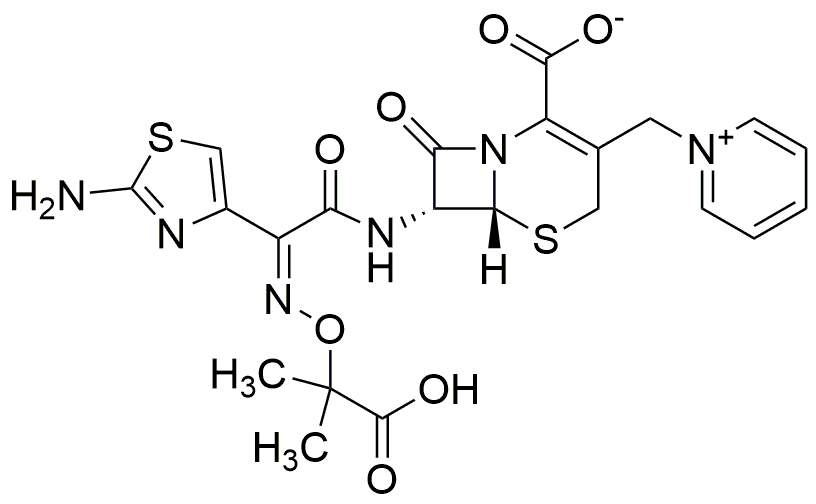Ceftazidime is widely utilized in research focused on:
- Antibiotic Therapy: It is primarily used to treat infections caused by Gram-negative bacteria, making it essential in hospitals for patients with severe infections.
- Clinical Research: Ceftazidime is often employed in clinical trials to evaluate its effectiveness against resistant bacterial strains, contributing to the development of new treatment protocols.
- Pharmaceutical Development: The compound serves as a model for synthesizing new cephalosporins, helping researchers innovate and improve antibiotic properties.
- Infection Control in Immunocompromised Patients: It is crucial in managing infections in patients undergoing chemotherapy or organ transplants, where the risk of infection is significantly heightened.
- Veterinary Medicine: Ceftazidime is also used in treating bacterial infections in animals, ensuring the health and safety of livestock and pets.
General Information
Properties
Safety and Regulations
Applications
Ceftazidime is widely utilized in research focused on:
- Antibiotic Therapy: It is primarily used to treat infections caused by Gram-negative bacteria, making it essential in hospitals for patients with severe infections.
- Clinical Research: Ceftazidime is often employed in clinical trials to evaluate its effectiveness against resistant bacterial strains, contributing to the development of new treatment protocols.
- Pharmaceutical Development: The compound serves as a model for synthesizing new cephalosporins, helping researchers innovate and improve antibiotic properties.
- Infection Control in Immunocompromised Patients: It is crucial in managing infections in patients undergoing chemotherapy or organ transplants, where the risk of infection is significantly heightened.
- Veterinary Medicine: Ceftazidime is also used in treating bacterial infections in animals, ensuring the health and safety of livestock and pets.
Documents
Safety Data Sheets (SDS)
The SDS provides comprehensive safety information on handling, storage, and disposal of the product.
Product Specification (PS)
The PS provides a comprehensive breakdown of the product’s properties, including chemical composition, physical state, purity, and storage requirements. It also details acceptable quality ranges and the product's intended applications.
Certificates of Analysis (COA)
Search for Certificates of Analysis (COA) by entering the products Lot Number. Lot and Batch Numbers can be found on a product’s label following the words ‘Lot’ or ‘Batch’.
*Catalog Number
*Lot Number
Certificates Of Origin (COO)
This COO confirms the country where the product was manufactured, and also details the materials and components used in it and whether it is derived from natural, synthetic, or other specific sources. This certificate may be required for customs, trade, and regulatory compliance.
*Catalog Number
*Lot Number
Safety Data Sheets (SDS)
The SDS provides comprehensive safety information on handling, storage, and disposal of the product.
DownloadProduct Specification (PS)
The PS provides a comprehensive breakdown of the product’s properties, including chemical composition, physical state, purity, and storage requirements. It also details acceptable quality ranges and the product's intended applications.
DownloadCertificates of Analysis (COA)
Search for Certificates of Analysis (COA) by entering the products Lot Number. Lot and Batch Numbers can be found on a product’s label following the words ‘Lot’ or ‘Batch’.
*Catalog Number
*Lot Number
Certificates Of Origin (COO)
This COO confirms the country where the product was manufactured, and also details the materials and components used in it and whether it is derived from natural, synthetic, or other specific sources. This certificate may be required for customs, trade, and regulatory compliance.


